
Click here for site NEWS.
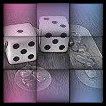
Click here to read about the summer's Featured Artists!
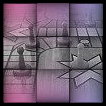
Visit the site's Guest page.
* * *
* CLICK HERE *
to learn more about the game of chess, or continue scrolling
down the page.
|
|
ESSAY ARCHIVES
The Essay
Archives were established in 2006 to give readers the opportunity to view other
essays which have appeared on the website since its inception.
This year's works also will be moved into this section after they have
appeared in the "This Month's Essay" space. Please click
on a link below to reach the item you would like to read. Also, PLEASE NOTE: Most of the essays have been "interactive" in the sense that a person can click back and forth between links embedded in the essay and the essay itself. The links were valid at
the time the articles were written. Links for all essays were updated in 2008. Some links are no longer available. Where possible, substitutions have be noted for
links which are no longer in existence.

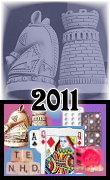 2011 Series: "Game Changer." This year's summer theme is "Game Changer." Essays from earlier in the
summer are included below. 2011 Series: "Game Changer." This year's summer theme is "Game Changer." Essays from earlier in the
summer are included below.
• July 2011 - A Game-Changing Milestone: The Garry Kasparov-Deep Blue Chess Match and Beyond. Click here to go to
the July 2011 essay.
• August 2011 - Where Scrabble Meets Lego in the Building Blocks of Life: Synthetic Biology. Click here to go to
the August 2011 essay.
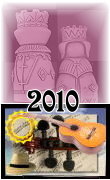 2010 Series: Music - Summer - Style. The site theme for Summer 2010 was "OCTAVE: Music, Summer-Style." Each of the essays reflected, in some way, on the three parts of
that theme. 2010 Series: Music - Summer - Style. The site theme for Summer 2010 was "OCTAVE: Music, Summer-Style." Each of the essays reflected, in some way, on the three parts of
that theme.
• June 2010 (MUSIC) - For Your Listening Pleasure . . . Recorded Sound and Technological Change. Click here to go to
the June 2010 essay.
• July 2010 (SUMMER) - Here Comes the Sun (Part 1) . . .. This is Part 1 of a two-part series looking at solar energy basics. Click here to go to
the July 2010 essay.
• August 2010 (SUMMER) - Here Comes the Sun (Part 2) . . .. Part 2 of the two-part series looks at the California Solar Initiative and a few uses of solar energy in some of the
cities covered on the site. Click here to go to
the August 2010 essay.
• September 2010 (STYLE) - Clothes Make the Man . . . Or Man Makes the Clothes . . . Or What?. The closing essay of the summer was a few passing thoughts about the clothes everyone
wears and the fibers from which they are made. Click here to go to
the September 2010 essay.
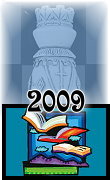 2009 Series: Work in Progress - Stories for Summer 2009. Prior to the start of the summer series, a brief essay on the final transition to digital television in the
U.S. appeared. Click on the link below to visit the essay. 2009 Series: Work in Progress - Stories for Summer 2009. Prior to the start of the summer series, a brief essay on the final transition to digital television in the
U.S. appeared. Click on the link below to visit the essay.
• June 2009 - I Hooked Up Last Night - End of Story?. Click here to go to
the June 2009 essay.
• July 2009 - Work in Progress - Stories for Summer 2009. Part I - Introduction. Click here to go to
the July 2009 essay.
• August/September 2009 - Work in Progress - Stories for Summer 2009. Part II - Stories Skirting the Edge of Science. Click here to go to
the August/September 2009 essay.
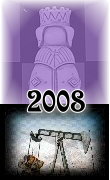 2008 Series: Petromorphosis. The summer of 2008 brought with it the highest gas prices
Southern California has ever seen. The series was called "Petromorphosis," and the three essays took a look at issues concerning gas prices and the future of
petroleum and other energy sources, with a focus on fuels. Click on the links below to visit the essays. 2008 Series: Petromorphosis. The summer of 2008 brought with it the highest gas prices
Southern California has ever seen. The series was called "Petromorphosis," and the three essays took a look at issues concerning gas prices and the future of
petroleum and other energy sources, with a focus on fuels. Click on the links below to visit the essays.
• Part I (June/July) - "Pay'n" at the Pump. Click here to go to
the June/July 2008 essay.
• Part II (August) - "They Didn't Leave the Stone Age Because They Ran Out of Stones." Click here to go to
the August 2008 essay.
• Part I and II Bibliography Click here to go to
the Bibliography for Parts I and II.
• Part III (September) - "An Af-fuel-ent Future?" Click here to go to
the September 2008 essay.
 2007 Series: Putting the Pieces Together: Technological Change - Where We've Been, Where We're Going, and a Brief Introduction to the
Future.. The 2007 series was entitled "Putting the Pieces Together: Technological Change - Where We've Been, Where We're Going, and a Brief Introduction to the
Future. Also, prior to the start of the summer series, a brief essay on compact
fluorescent light bulbs appeared. Click on the links below to visit the essays. 2007 Series: Putting the Pieces Together: Technological Change - Where We've Been, Where We're Going, and a Brief Introduction to the
Future.. The 2007 series was entitled "Putting the Pieces Together: Technological Change - Where We've Been, Where We're Going, and a Brief Introduction to the
Future. Also, prior to the start of the summer series, a brief essay on compact
fluorescent light bulbs appeared. Click on the links below to visit the essays.
• "A Short Note on Compact Fluorescent Light Bulbs (CFLs)." Click here to go to
the June 2007 essay.
• "Putting the Pieces Together: Technological Change - Where We've Been." Click here to go to
the July 2007 essay.
• "Putting the Pieces Together: Technological Change - Where We're Going." Click here to go to
the August 2007 essay.
• "Putting the Pieces Together: Technological Change - A Brief Introduction to the Future." Click here to go to
the September 2007 essay.
 2006 Series: "Digital Sunrise, Analog Sunset." The series began with a continuation
of and update to the previous year's article on the transition to digital television in the United States. It continued with an introductory piece on the technology allowing phone calls to be made
over the internet, or VOIP (Voice Over Internet Protocol), and concluded with an exploration of Radio Frequency Identification, or RFID. 2006 Series: "Digital Sunrise, Analog Sunset." The series began with a continuation
of and update to the previous year's article on the transition to digital television in the United States. It continued with an introductory piece on the technology allowing phone calls to be made
over the internet, or VOIP (Voice Over Internet Protocol), and concluded with an exploration of Radio Frequency Identification, or RFID.
• "An Update on the Transition to Digital Television in the U.S." Click here to go to
the June 2006 essay.
• "Phone Calls Over the Internet? Getting to Know VOIP (Voice Over Internet Protocol)" Click here to go to
the July/August 2006 essay.
• "Something Old, Something New . . . The ABC's of RFID (Radio Frequency Identification)" Click here to go to
the September 2006 essay.
 2005 Series: "Blue Roses, Green Cars and More. What Color is Your Future?" This series covered a number of
topics. It began with an update and summary of information concerning genetically modified foods. The series then continued for the next two months with a look at "green" cars and hydrogen
fuel cells. The summer concluded with an introduction to the transition to digital television in the U.S. 2005 Series: "Blue Roses, Green Cars and More. What Color is Your Future?" This series covered a number of
topics. It began with an update and summary of information concerning genetically modified foods. The series then continued for the next two months with a look at "green" cars and hydrogen
fuel cells. The summer concluded with an introduction to the transition to digital television in the U.S.
• "Golden Rice, Yellow Maize and Amber Waves of
Grain: A 2005 Update of the Genetically Modified Foods Debate." Click here to read the
June 2005 essay and Introduction to the 2005 Essay Series.
• "Green Cars and the Road Ahead: A Clear Future? -
Part I." Click here
to read the July 2005 essay.
• "Green Cars and the Road Ahead: A Clear Future? -
Part II." Click
here to read the August 2005 essay.
• Combined Bibliography for Parts I and II of "Green
Cars". Click
here to reach the bibliography.
• "Will You Be Singing the TV Black Box Blues? The Transition to Digital Television
in the U.S." Click here
to read the September 2005 essay.
 2004 Series: "A Taste of the Genetically Modified Foods Debate." This series examined in depth the debate on genetically
modified (GM) foods. The first essay in the series was an introduction to the topic. The second continued with specific examples of foods which either had been genetically modified or were being developed. The series
concluded with a look at genetically modified foods and the biotechnology industry developing them, with a particular focus on California. 2004 Series: "A Taste of the Genetically Modified Foods Debate." This series examined in depth the debate on genetically
modified (GM) foods. The first essay in the series was an introduction to the topic. The second continued with specific examples of foods which either had been genetically modified or were being developed. The series
concluded with a look at genetically modified foods and the biotechnology industry developing them, with a particular focus on California.
• "Genes, Beans and Greens: A Taste of the
Genetically Modified Foods Debate, Part I". Click here to read
Part I (June/July).
• "The Products and the Promise: A Taste of the
Genetically Modified Foods Debate, Part II". Click here to read
Part II (August).
• "Seeds, Industry Germination and California Roots:
A Taste of the Genetically Modified Foods Debate, Part III". Click here to
read Part III (September).
• Combined Bibliography for Parts I, II and III. Click here to
reach the bibliography.
 2003 Essays: The summer of 2003 was the first summer for the site. Two essays were included, but they were neither related nor
part of any series. The August essay was a look at the student loan system, and the second discussed issues pertinent to what was then the upcoming recall election in
California. Also included with the September essay is a poem which appeared on the site in October, just prior to the recall election. 2003 Essays: The summer of 2003 was the first summer for the site. Two essays were included, but they were neither related nor
part of any series. The August essay was a look at the student loan system, and the second discussed issues pertinent to what was then the upcoming recall election in
California. Also included with the September essay is a poem which appeared on the site in October, just prior to the recall election.
• "Student Loans: Open Secrets of the System and What
You Need to Know". Click here to go to
the August 2003 essay.
• "Politicians, Personalities and California's
October 7 Plebiscite: Do You Recall . . .?", plus website poem "The
California Recall Raven." Click here to go to
the September 2003 essay.
To return to the top of the
page, click
here.

|
Dust of Taken Pieces
So the four souls are ranged, the chess-board set,
The dark, invisible hand of secret Fate
Brought it to come to being that they met
After so many years of lying in wait
While we least think it he prepares his Mate
Mate, and the King's pawn played, it never ceases
Though all the earth is dust of taken pieces.
John Masefield, O.M., Collected Poems (1923)
from prologue to "The Widow in the Bye Street"
The Game of Chess
 In Chess, as with many games with roots in more ancient times, the exact origin of the game is somewhat obscure. Historians
generally consider shatranj, developed in the Persian Empire around 600 A.D., to be one of the most direct ancestors of modern chess. Shatranj, however, grew to be a more refined version of
the earlier Indian games of chaturanga (a Sanskrit name for a battle formation) and ashtapada. In Chess, as with many games with roots in more ancient times, the exact origin of the game is somewhat obscure. Historians
generally consider shatranj, developed in the Persian Empire around 600 A.D., to be one of the most direct ancestors of modern chess. Shatranj, however, grew to be a more refined version of
the earlier Indian games of chaturanga (a Sanskrit name for a battle formation) and ashtapada.
Chaturanga was originally a four-player game played with dice. Gradually the four
players became two, and the use of dice was dropped to take away the element of chance, as gambling was prohibited in early Hindu culture. Some of the earliest
references to the game in Europe have been found around 1000 A.D., and initial European chess was said to be virtually the same as the Persian shatranj. Several authors note
that as the game began to take hold in Europe, players began to make changes to the board and names of pieces, among other things. The Persian "shah," "vizier," "alfil" (elephants), and "rukh" (chariot), became
kings, queens, bishops and castles, with knights remaining as horses and "foot soldiers" as pawns. The net effect of some of these early changes was to "remove the game further from its roots in a representation of
warfare and closer to that of the medieval feudal social order." [Parlett]
Early changes lasted for about 500 years, and the period of modern chess is generally considered to have begun
around 1500, with a revolution in the game, its play, and the moves the pieces were allowed to make. Somewhere along the way chess became as much an institution as a game, and one author says that: "After the 1700's, the history
of orthodox chess ceased to be one of internal evolution and became one of its players and styles, tournaments and champions, and principles and
theory." [Parlett]
The game of strategy and tactics has travelled well. Many countries and cultures developed their own popular variations of chess,
such as shogi in Japan. During the Cold War the game became analogous to the tensions between the U.S. and the Soviet Union with promiment matches between players from the two
countries. The challenge of the game also became one of the earliest tests of computer "intelligence" in competition against
a human opponent. Today, the ancient game has merged with newer graphics and computer technologies, changing the way it can be played without changing the
game itself. Chess Titans, a computer-based version of chess, was include in most versions of Microsoft's Vista operating system and is a standard game in Windows 7, bringing the game to a whole
new generation of players.
In a note on strategy in chess, Compton's Encyclopedia comments that, "In a hard-fought
match, . . . the game is usually won through a number of small successes that weaken the enemy. . . A careful player always studies his opponent's moves as thoroughly as his own. Not to do
so often means defeat."
Reference Sources:
Compton's Encyclopedia, 1969 Edition.
Craig, Steve. Sports and Games of the Ancients, Westport, Connecticut: Greenwood Press, 2002.
Encyclopaedia Britannica, 1953 Edition.
Knight, Norman, and Guy, Will. King, Queen and Knight: A Chess Anthology in Prose and Verse, New York: St. Martin's Press, 1975.
Parlett, David. Oxford History of Board Games, Oxford and New York: Oxford University Press, 1999.
Scarne, John. Scarne's Encyclopedia of Games, New York: Harper and Row Publishers, 1973.
Wilkins, Sally. Sports and Games of Medieval Cultures, Westport, Connecticut: Greenwood Press, 2002.
|
To return to the top of the
page, click
here.


Follow www.dorothyswebsite.org on TWITTER!
Home | Essays |
Poetry | Free Concerts | Links | 2011 Extras |
About the Site
Featured Artists | 2011 Website Special Guests | News
|
|
|





 2011 Series: "Game Changer." This year's summer theme is "Game Changer." Essays from earlier in the
summer are included below.
2011 Series: "Game Changer." This year's summer theme is "Game Changer." Essays from earlier in the
summer are included below. 2010 Series: Music - Summer - Style. The site theme for Summer 2010 was "OCTAVE: Music, Summer-Style." Each of the essays reflected, in some way, on the three parts of
that theme.
2010 Series: Music - Summer - Style. The site theme for Summer 2010 was "OCTAVE: Music, Summer-Style." Each of the essays reflected, in some way, on the three parts of
that theme. 2009 Series: Work in Progress - Stories for Summer 2009. Prior to the start of the summer series, a brief essay on the final transition to digital television in the
U.S. appeared. Click on the link below to visit the essay.
2009 Series: Work in Progress - Stories for Summer 2009. Prior to the start of the summer series, a brief essay on the final transition to digital television in the
U.S. appeared. Click on the link below to visit the essay. 2008 Series: Petromorphosis. The summer of 2008 brought with it the highest gas prices
Southern California has ever seen. The series was called "Petromorphosis," and the three essays took a look at issues concerning gas prices and the future of
petroleum and other energy sources, with a focus on fuels. Click on the links below to visit the essays.
2008 Series: Petromorphosis. The summer of 2008 brought with it the highest gas prices
Southern California has ever seen. The series was called "Petromorphosis," and the three essays took a look at issues concerning gas prices and the future of
petroleum and other energy sources, with a focus on fuels. Click on the links below to visit the essays. 2007 Series: Putting the Pieces Together: Technological Change - Where We've Been, Where We're Going, and a Brief Introduction to the
Future.. The 2007 series was entitled "Putting the Pieces Together: Technological Change - Where We've Been, Where We're Going, and a Brief Introduction to the
Future. Also, prior to the start of the summer series, a brief essay on compact
fluorescent light bulbs appeared. Click on the links below to visit the essays.
2007 Series: Putting the Pieces Together: Technological Change - Where We've Been, Where We're Going, and a Brief Introduction to the
Future.. The 2007 series was entitled "Putting the Pieces Together: Technological Change - Where We've Been, Where We're Going, and a Brief Introduction to the
Future. Also, prior to the start of the summer series, a brief essay on compact
fluorescent light bulbs appeared. Click on the links below to visit the essays. 2006 Series: "Digital Sunrise, Analog Sunset." The series began with a continuation
of and update to the previous year's article on the transition to digital television in the United States. It continued with an introductory piece on the technology allowing phone calls to be made
over the internet, or VOIP (Voice Over Internet Protocol), and concluded with an exploration of Radio Frequency Identification, or RFID.
2006 Series: "Digital Sunrise, Analog Sunset." The series began with a continuation
of and update to the previous year's article on the transition to digital television in the United States. It continued with an introductory piece on the technology allowing phone calls to be made
over the internet, or VOIP (Voice Over Internet Protocol), and concluded with an exploration of Radio Frequency Identification, or RFID. 2005 Series: "Blue Roses, Green Cars and More. What Color is Your Future?" This series covered a number of
topics. It began with an update and summary of information concerning genetically modified foods. The series then continued for the next two months with a look at "green" cars and hydrogen
fuel cells. The summer concluded with an introduction to the transition to digital television in the U.S.
2005 Series: "Blue Roses, Green Cars and More. What Color is Your Future?" This series covered a number of
topics. It began with an update and summary of information concerning genetically modified foods. The series then continued for the next two months with a look at "green" cars and hydrogen
fuel cells. The summer concluded with an introduction to the transition to digital television in the U.S. 2004 Series: "A Taste of the Genetically Modified Foods Debate." This series examined in depth the debate on genetically
modified (GM) foods. The first essay in the series was an introduction to the topic. The second continued with specific examples of foods which either had been genetically modified or were being developed. The series
concluded with a look at genetically modified foods and the biotechnology industry developing them, with a particular focus on California.
2004 Series: "A Taste of the Genetically Modified Foods Debate." This series examined in depth the debate on genetically
modified (GM) foods. The first essay in the series was an introduction to the topic. The second continued with specific examples of foods which either had been genetically modified or were being developed. The series
concluded with a look at genetically modified foods and the biotechnology industry developing them, with a particular focus on California. 2003 Essays: The summer of 2003 was the first summer for the site. Two essays were included, but they were neither related nor
part of any series. The August essay was a look at the student loan system, and the second discussed issues pertinent to what was then the upcoming recall election in
California. Also included with the September essay is a poem which appeared on the site in October, just prior to the recall election.
2003 Essays: The summer of 2003 was the first summer for the site. Two essays were included, but they were neither related nor
part of any series. The August essay was a look at the student loan system, and the second discussed issues pertinent to what was then the upcoming recall election in
California. Also included with the September essay is a poem which appeared on the site in October, just prior to the recall election. In Chess, as with many games with roots in more ancient times, the exact origin of the game is somewhat obscure. Historians
generally consider shatranj, developed in the Persian Empire around 600 A.D., to be one of the most direct ancestors of modern chess. Shatranj, however, grew to be a more refined version of
the earlier Indian games of chaturanga (a Sanskrit name for a battle formation) and ashtapada.
In Chess, as with many games with roots in more ancient times, the exact origin of the game is somewhat obscure. Historians
generally consider shatranj, developed in the Persian Empire around 600 A.D., to be one of the most direct ancestors of modern chess. Shatranj, however, grew to be a more refined version of
the earlier Indian games of chaturanga (a Sanskrit name for a battle formation) and ashtapada.